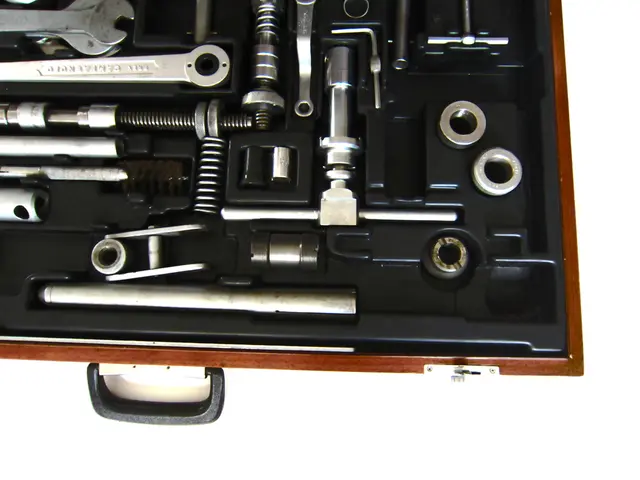Fly-worthy vehicle by Alef eliminates the fantastical element from the realm of science fiction
The world of transportation is on the brink of a new era, with electric vertical takeoff and landing (eVTOL) vehicles like the Xpeng Aero HT and the Alef Aeronautics prototype poised to revolutionise the way we travel.
The Xpeng Aero HT, unveiled at CES 2025, boasts an impressive design that allows for both air and road travel. The vehicle can take off vertically using electric power and manoeuvre in all directions once airborne. On the ground, it operates as a Low Speed Vehicle (LSV), reaching speeds of up to 25 miles per hour.
However, the cost of the Xpeng Aero HT remains undisclosed, and the exact production timeline is yet to be announced. Over 3,200 preorders have been placed for the vehicle, priced at $299,999.
Meanwhile, the Alef Aeronautics prototype, resembling a car, has also made waves in the industry. While it is uncertain if Alef will successfully turn science fiction into reality, the Xpeng Aero HT is another contender in the race towards mass production of flying cars.
Regulations for flying cars, including eVTOL vehicles like the Alef Aeronautics model, are evolving but remain complex and somewhat restrictive as of 2025. The Federal Aviation Administration (FAA) has adopted the Modernization of Special Airworthiness Certification (MOSAIC) rule, which significantly updates rules for light-sport aircraft. This rule increases weight and speed limits, allows for new propulsion types and modern avionics, and broadens the kinds of aircraft sport pilots can fly, facilitating innovation and the certification of new vehicles like eVTOLs.
However, flying cars still require pilot licensing, often a private pilot’s license for full-scale operation. Challenges related to managing urban low-altitude airspace crowded with potentially thousands of vehicles also loom large. Regulatory authorities worldwide are working on certification, coordination, and social acceptance frameworks to support mass deployment, but infrastructure for vertiports and charging, noise regulations, safety certification, and integration with existing air traffic remain critical and unresolved hurdles.
Alef Aeronautics and other companies planning mass production of eVTOLs must navigate these evolving regulations, which aim to balance safety with the rapid innovation required to bring these vehicles to market. The MOSAIC rule is a key enabler, but broader urban airspace management and infrastructure regulations are still being developed globally.
In summary, while the regulatory environment is improving, flying car operation will initially be limited to specific use cases such as air taxi services before personal ownership becomes common. The regulations for flying cars in the near future are still undetermined, including for the Xpeng Aero HT.
NBC News has also witnessed a test of the Xpeng Aero HT flying car, but did not see a driver enter or exit the vehicle. Alef Aeronautics expects to enter mass production of their flying car within the next year, but it remains to be seen if they will manage to turn science fiction into reality.
In other news, Tesla sales are reportedly falling globally, and Elon Musk's potential decision to end USAID could negatively impact America's future. These developments underscore the dynamic nature of the transportation industry, with innovation and regulation constantly intertwined.
References: 1. Regulation of Urban Air Mobility: A Review of Current and Future Regulatory Frameworks for eVTOLs 2. FAA’s Modernization of Special Airworthiness Certification (MOSAIC) rule: A game-changer for eVTOLs 3. Advanced Air Mobility: A Roadmap for the Future of Urban Air Transportation 4. FAA’s MOSAIC rule: A step towards the certification of eVTOLs 5. Xpeng Aero HT: The Future of Urban Transportation?
- Google's AI could potentially assist in managing urban low-altitude airspace for eVTOL vehicles, helping thousands of flying cars navigate safely and efficiently as the technology matures and becomes more common.
- Among the vast array of gadgets and technology displayed at CES 2025, smart-home devices took a backseat to the emerging market of smart-transportation gadgets, with flying cars like the Xpeng Aero HTstealing the show.
- Tech giants like Google, along with startups spearheading the development of eVTOL vehicles, are looking to AI and technology to revolutionize not just the transportation sector, but also the way we live and work in smart-cities of the future.




